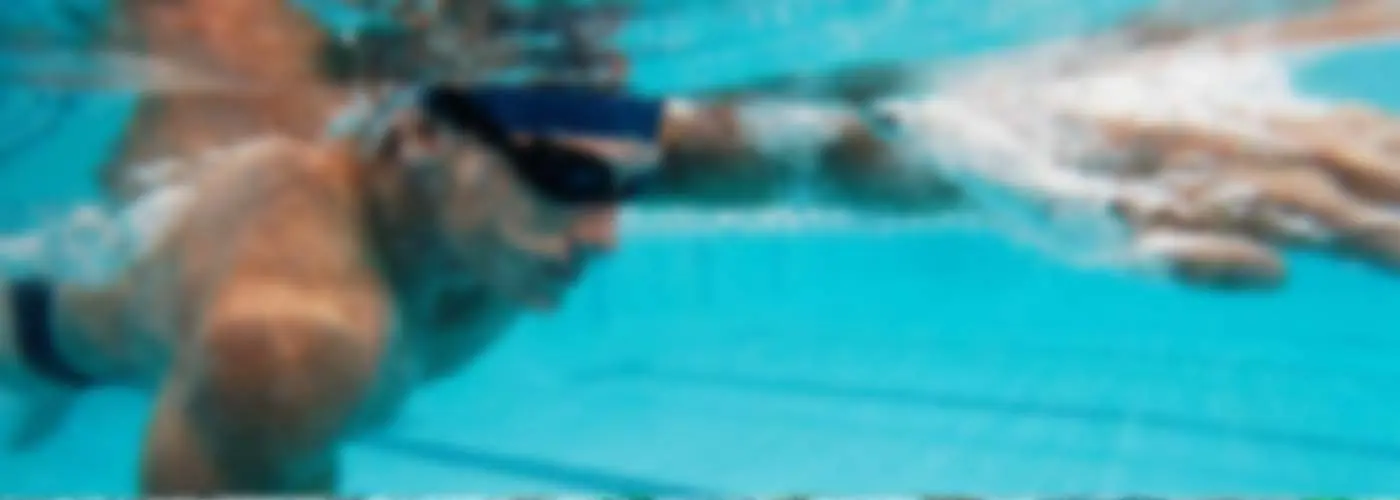At the start of every triathlon or open water race, certain people hesitate—intimidated by the crashing surf. Waves continuously hit them, their energy wanes. By the time they find the courage to dive through the waves, they're exhausted. Follow the tips below to conquer your open water entrances and exits.
Acquaint Yourself With Waves
It all starts with practice. Plan some open water training before the race to get used to possible conditions you'll experience in competition. If possible, train at the event's location to acclimate yourself with that environment. Always swim with others and make sure a lifeguard is on duty before heading out. Tell the lifeguard your plans so they'll keep an eye on you.
Ask if there are any conditions—such as riptides, currents or other hazards—that you should be aware of before swimming in the open ocean. If you're at a beach with a buoy or other marker to swim to, let the lifeguard know your route.
Scout the Surf
Whether training or racing, start your swim by standing on the beach and observing the surf. Study any noticeable currents or riptides. Riptides will appear as a smooth section in the water. To spot a current, note which way other swimmers or surfers are getting pulled or floating.
Once you have looked at the conditions, you'll want to make sure there are no surprises on your route into the ocean. Wade in thigh-deep water to see what the ocean floor is like, or if there is a drop off or any holes or rocks to be aware of. Sometimes, standing in the water can tell you when a strong current is present.
Now you're ready to start your swim. Ask yourself: does your race begin with a running start from the beach? Or do you begin already in the water? You'll prepare yourself and gain confidence by practicing your entrances as you'll do them in competition.
Go for it
Move continuously forward past the breakwater and to the first buoy to ensure a fast swim. Remember—never stop.
If you start on the beach, run through the water until it reaches about knee-height. At that point, do a high-knee run, lifting your legs out of the water. When the water is above knee-height, it's time to start dolphin diving.
A dolphin dive is a shallow dive where you push forward off the ground with your legs and dive just under the surface of the water. When dolphin diving, keep your head tucked between your outstretched arms with your biceps squeezing your ears. Do not look up. This is important for both speed and safety. Start with shallow dolphin dives and push off the ground each time to propel yourself forward.
Dive under the waves breaking in front of you. As soon as the wave starts to form, dive deep enough to touch the sand with your fingertips. Find the calm spot under every wave and let the wave go over your head. Push forward off the ground so, rather than coming straight up, you continue to move forward the entire time.
If another wave is crashing, take a deep breath and repeat the dive and forward push-off. Usually, waves crash in water that is shallow enough for you to touch the ground.
The worst thing you can do is run out to knee-height water and stand there as waves crash on you—knocking you backwards and using up energy. Never stand upright once past knee-height water. Keep your head down and dive forward.
The correct sequence is: Run—high knees—dolphin dives—swim straight through. Once you start running, stick to this pattern and you'll be at the first buoy in no time. Avoid a sequence of: Run—stop and turn your back on the waves--wander out a little farther until the waves come again—stop and turn your back again and get knocked toward the shore.
How Do I Get Back to Shore?
When you've made it to the home stretch, pick a spot on shore near the finish and use it to swim toward. As you reach the area where waves are forming, use their momentum to help push you forward. Instead of a slight turn to the side to breathe, turn your head a little more and peek behind you to see what's coming. If a wave is nearing, swim harder and try to gain momentum from it. Above all, stay calm.
Continue to swim once the waves are crashing. If one is about to crash on you, take a deep breath, put your hands over your head in the dolphin-diving position and bodysurf back to shore. Continue to hold your breath and maintain a streamlined position with your arms outstretched in front of you.
If you don't catch a wave, still try to use their momentum to push you forward. When you can touch the ground, begin dolphin diving. Swim until your belly is on the sand. The waves and white water will continue to push you to the shore, eliminating the need to expend energy running through the water.
The more practice you have with open water, the calmer and more confident you'll be during competition, helping to ensure a strong start to your race. Check with a local triathlon or masters swimming club to see if they have organized open water swims. Be safe and have fun.
Get ACTIVE on the Go


Meet Mobile
Swim smarter: heats, lane assignments and real-time results in the palm of your hand.
Available for iOS | Android








Discuss This Article